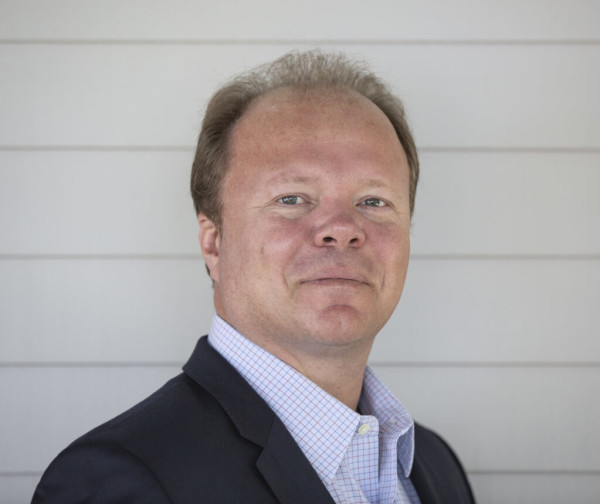Private market strategies becoming core parts of wealth portfolios

Access to private markets is becoming easier for high net worth investors, but wealth managers have a duty to ensure clients are well aware of both the upsides and potential downsides of these investments
Before the global financial crisis wreaked havoc across markets, banks and broader society in 2008, there was an illiquid asset class taking over increasing chunks of wealthy investors’ portfolios.
Previously the domain of large institutional pension funds, hedge funds had successfully plotted their way into the affections of the ‘ultra’ clan. Then came a crisis of confidence fuelled by the collapse of mortgage-backed securities, coupled with a major fraud perpetrated by former Nasdaq chairman Bernie Madoff, now deceased. In the resulting game of musical chairs, only the fast and fortunate could access their investments, with the remainder left circling in hope rather than expectation.
Wider reach
Fifteen years later, today’s illiquid asset of choice in a challenging market is the private market strategy. This typically invests in unlisted projects, with much upside and some potential pitfalls.
This is not a new asset by any means, but its benefits had previously been confined to corporates and financial institutions. Since the peak of the Covid-19 pandemic, however, its advocates have been gearing up their marketing to democratise distribution to a client base embracing high net worth investors.
At Geneva-based private bank Lombard Odier, managing partner Frederic Rochat declares himself “very privileged” to have developed a private markets strategy during the last two decades.
“The conversation was started by some of Switzerland’s biggest pension funds, who at the time could not serve the technical rates they needed for clients, so they started looking at illiquid assets,” he says, describing the origins of diversification into private equity, real estate, venture capital and infrastructure investments. Mr Rochat built a team addressing these objectives in 2007.
“We have been extremely privileged that the team has shown remarkable consistency and continuity and we still have the same team today that we had 15 years ago,” he adds, with the division now numbering 35 specialists, who “scout and select” external managers to oversee clients’ assets.
Over the years, Lombard Odier’s approach has evolved to expand these selections. “There is much confusion in the industry,” he believes. “A lot of people understand private assets as private equity, but we think it is much broader than that. Like in the listed world, you have bonds and equities, in the private assets world, you have venture capital, private equity, real estate, infrastructure and private debt. Construction of portfolios in private equity requires a lot of skill and discipline, including diversification, which is a key element. If rates continue to go up, private equity would suffer like listed equities, but private credit will continue to do well, as it is structured mostly as variable notes.”
Times have changed
French bank BNP Paribas also sees itself as a “pioneer in Europe, offering access to private equity for private clients since 1998,” according to Claire Roborel de Climens, global head of private and alternative investments at BNP Paribas Wealth Management. “We were very advanced in this democratisation, requested by our clients at the time, the entrepreneurs, at it is in their DNA to invest in private equity.”
In those days, the private equity firms – known as general partners or GPs in the industry – did not relish working with private clients, she recalls. “But over the last two or three years, that has completely changed. Every day there are two to four GPs knocking at the door to work with us and have their funds distributed to high net worth clients. Today, this is really a trend.”
I believe that with this issue of democratisation, there is a lesson for us. We need to be quite cautious
Indeed, her boss and wealth management CEO Vincent Lecomte sees private equity not just as a trend, but an “evolving ecosystem”, embracing the community of GPs, the limited partners or LPs which invest in them, and the corporates which provide both the investment target and capital to invest in other firms. The more this organism evolves, runs this line of thought, the better the bank can serve its clients.
Yet Ms Roborel de Climens has been in the business long enough to sense danger, very much aware that it was her own bank, BNP Paribas, which was forced to freeze several MBS funds, leading to the financial and liquidity crisis which put paid to the hedge funds boom.
“I believe that with this issue of democratisation, there is a lesson for us. We need to be quite cautious. There are many new players in this market, including private banks and digital platforms. The access to [these assets] is easier today for private clients.”
Not only should private bankers make their clients more aware of the benefits of private equity as an asset class, but they also need to educate them about its challenges and potential downside, maturity and liquidity issues, she believes, promoting round-the-clock dialogue between clients and advisers through a new digital service.
Since the pandemic started to subside, BNP Paribas has noticed a marked increase in interest of its clients in the real economy, with an appetite for buying into unlisted companies, and launched its Private Assets Portal during summer 2022 to help accommodate them.
This follows on from the launch by French banks of the unit-linked insurance contract, with access to private equity back in 2016, providing a new legal structure for private clients looking to extend their investment options. “We began mixing private assets with listed assets,” recalls Ms Roborel de Climens, “working with the ‘usual suspects,’ in the industry, the big brands and big actors in the field.”
Private assets, according to the bank, are well placed to exploit ‘megatrends’, including investing in infrastructure “essential to the community”, such as telecom cables and digital facilities, with criteria related to environmental, social and governance (ESG) goals having been taken on board in 2021.
“We are also integrating tech in all our deals, focusing on the tech dimension in [companies’] business plans, as digitalisation is everywhere,” she says. “This is the way to address technology.”
But Ms Roborel de Climens also warns her clients not to make their portfolio too concentrated or focused on one particular theme. “We prefer to recommend generalist strategies, with some sector expertise, rather than anything too niche,” she warns. “With this volatile environment, we don’t want to focus too much on one sector.”
Overall portfolio
But not all firms share this cautious outlook, with a gung ho approach more popular in some corners of the wealth industry, particularly among leading promoters of private assets. At BlackRock, the world’s largest funds manager, private asset sales teams currently encounter allocations of around 2 per cent in portfolios of wealthy investors and see a major opportunity of nudging the nascent exposure closer to 10 per cent.
“We are focusing increasingly on the overall portfolio,” says West Lockhart, head of BlackRock’s alternatives wealth arm in the Emea region. “There is a tailwind behind private markets, as wealth managers want to move from selling private markets as an individual product to having it as part of strategic asset allocation,” he says. The talk today is about shifting the traditional 60/40 equities to bonds weighting to a more contemporary adaptation of 50/30/20, with the smaller segment invested in ‘alternative’ assets.
New regulations around European Long-term Investment Funds (ELTIFs) in Luxembourg, with recent enhancements, should significantly boost exposure to private markets among Europe’s investors, with “assets likely to triple from where they are today”.
Previously, barriers to investment among high net worth clients were of an operational and technological nature, he claims. “Many wealth managers lacked the ability to handle private markets products, either because they couldn’t complete capital calls, handle distribution or the lifecycle of the product,” says Mr Lockhart. “That is quickly changing,” with platforms such as iCapital and Allfunds playing a growing role in what he also sees as a fast-developing ecosystem, in the same way as Mr Lecomte at BNP Paribas.
This ecosystem includes a “wide network of sponsors and partners”, says Mr Lockhart. “Sourcing has always been important but is now becoming even more important, particularly if you believe we are heading into a recessionary environment,” he says. “You need to take great care about how you are underwriting the deals. At BlackRock we see 7,000 deals annually. Our selection rate is in the 4 to 5 per cent range, and this number may creep down from there, as our teams become even more selective.”
Transition to a low carbon economy is a critical theme for our clients
The nature of the private markets portfolio is also changing, he says. “Historically, 75 per cent of assets going into portfolios of wealthy clients [investing in private assets] have been private equity and 15 per cent private credit. But those numbers are going to shift, into real estate and infrastructure, so there is much more diversification within private markets.”
The key investment narrative favoured by BlackRock’s infrastructure and private equity teams centres around ‘decarbonisation’ technology favouring renewable energy. “Transition to a low carbon economy is a critical theme for our clients,” says Mr Lockhart, with $125bn of investment needed by 2050 in the renewables space, embracing hydrogen batteries and carbon capture. One example of BlackRock’s work in this sphere is Decarbonisation Partners, a joint venture with Temasek, Singapore’s state-owned investment fund. “We have been taking direct aim on how to identify late-stage venture capital and early-stage growth opportunities, where there is a technology that has been a pilot for industrial scale.”
The first fund has completed five transactions so far, including MycoWorks, pioneering a mushroom fibre to replace traditional bovine leather for use in luxury handbags.
The experience of 2022 has provided a watershed moment for many, he comments. “Some investors experienced negative returns in public equities, and negative returns in bonds, depending on how you were allocated,” he says. “So investors were thinking, ‘how can I build the core resilience in my portfolio and how can I find true diversifiers?’ This means there is so much more interest in infrastructure and real estate to reduce negative returns.”
In response to claims that private assets have passed their heyday as a fixed income substitute, now that a changing interest rate backdrop has revived bonds, he offers an inclusive response, fitting to the BlackRock multi-asset focus. “In 2023, more investors can now achieve higher returns in fixed income than a year ago. As the yield curve has shifted, there is increased appetite for bonds, but it depends on whether you are talking about nominal or real returns after inflation. This topic often hinges on what you think real returns will be. We believe a mix of public and private credit can produce a better blended return.”
Whereas he recognises the “critical importance” of education about the “benefits and risks of owning a private equity portfolio”, Mr Lockhart also believes one of the greatest risks is not being invested to a significantly broad and deep allocation.
“The next vintage could be a very strong one,” he warns any sceptics. “History shows the vintages after an economic crisis often perform best.”





